
Fleetwood is a coastal town in the Borough of Wyre in Lancashire, England, at the northwest corner of the Fylde. It had a population of 25,939 at the 2011 census.

Cleveleys is a town on the Fylde Coast of Lancashire, England, about 4 miles (6 km) north of Blackpool and 2 miles (3 km) south of Fleetwood. It is part of the Borough of Wyre. With its neighbouring settlement of Thornton, Cleveleys was part of the former urban district of Thornton-Cleveleys and is part of the Blackpool Urban Area. In 2011 the Cleveleys Built-up area sub division had a population of 10,754.

The Blackpool Tramway runs from Blackpool to Fleetwood on the Fylde Coast in Lancashire, England. The line dates back to 1885 and is one of the oldest electric tramways in the world. It is operated by Blackpool Transport Services (BTS) and runs for 18 km. It carried 4.9 million passengers in 2022/23.
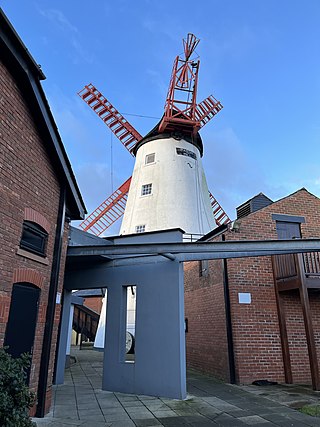
Thornton is a village in the Borough of Wyre, about 4 miles (6 km) north of Blackpool and 2 miles (3 km) south of Fleetwood. The civil parish of Thornton became an urban district in 1900, and was renamed Thornton-Cleveleys in 1927. In 2011 the Thornton built-up area sub division had a population of 18,941.

Blackpool North and Fleetwood was a parliamentary constituency represented in the House of Commons of the Parliament of the United Kingdom. From 1997 to 2010, it elected one Member of Parliament (MP) by the first past the post system of election.
Thornton-Cleveleys is a conurbation consisting of the village of Thornton and the town of Cleveleys. The two settlements formed a joint urban district from 1927 until 1974, before becoming part of Wyre. The two settlements constitute part of the Blackpool Urban Area.
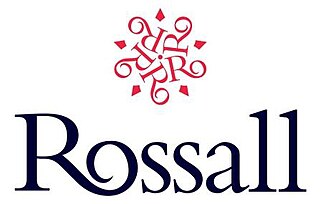
Rossall School is a public school for 0–18 year olds, between Cleveleys and Fleetwood, Lancashire. Rossall was founded in 1844 by St Vincent Beechey as a sister school to Marlborough College which had been founded the previous year. Its establishment was "to provide, at a moderate cost, for the sons of Clergymen and others, a classical, mathematical and general education of the highest class, and to do all things necessary, incidental, or conducive to the attainment of the above objects." Along with Cheltenham, Lancing and Marlborough, Rossall was part of a flurry of expansion in public school education during the early Victorian period.

Blackpool North and Cleveleys is a constituency represented in the House of Commons of the UK Parliament since 2010 by Paul Maynard, a Conservative.

Bispham is a village on the Fylde coast in the Borough of Blackpool in Lancashire, England.
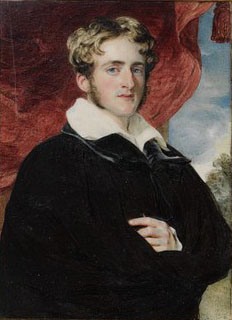
Sir Peter Hesketh-Fleetwood, 1st Baronet, was an English landowner, developer and Member of Parliament, who founded the town of Fleetwood, in Lancashire, England. Born Peter Hesketh, he changed his name by Royal assent to Hesketh-Fleetwood, incorporating the name of his ancestors, and was later created Baronet Fleetwood. Predeceased by an older brother, he inherited estates in west Lancashire in 1824. Inspired by the transport developments of the early 19th century, he decided to bring the railway to the Lancashire coast and develop a holiday resort and port. He hired architect Decimus Burton to design his new town, which he named Fleetwood; construction began in 1836. Hesketh-Fleetwood was instrumental in the formation of the Preston and Wyre Railway Company and with his financial support, a railway line was built between Preston and Fleetwood which opened in 1840.

The A587 is a road in England that runs from Blackpool to Fleetwood in Lancashire.
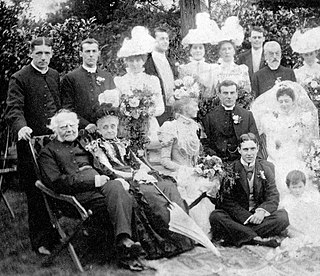
St. Vincent Beechey was a nineteenth-century vicar of Fleetwood and Thornton-Cleveleys, Lancashire, and later of Worsley, Lancashire. He is known for founding Rossall School at Fleetwood in 1844, and he was also president of the Manchester Photographic Society. At the time of his death, it was believed that Beechey was the oldest clergyman in England, being 93 years old.
Blackpool and the Fylde coast have become a ship graveyard for a number of vessels over the years. Most of the shipwrecks occurred at or near Blackpool, whilst a few happened a little further afield but have strong connections with the Blackpool area. For this article, Blackpool means the stretch of coast from Fleetwood to Lytham St Annes.

There have been two baronetcies created for members of the Fleetwood family, an old Lancashire family, one in the Baronetage of England and one in the Baronetage of the United Kingdom. Both creations are extinct.
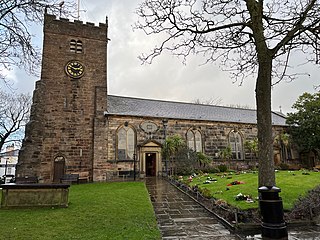
St Chad's Church is an Anglican church in Poulton-le-Fylde, Lancashire, England. It is an active parish church in the Diocese of Blackburn and the archdeaconry of Lancaster. It is recorded in the National Heritage List for England as a designated Grade II* listed building. A church on the site was built no later than the 11th century and may have existed prior to the Norman conquest of England. The tower dates from the 17th century, and much of the remainder of the building from a major renovation in the 18th century, although some of the fabric of the original structure remains. Further renovation and additions took place in the 19th, 20th and 21st centuries.
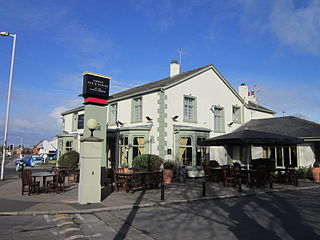
Carleton is a village on the coastal plain of the Fylde in the Borough of Wyre in Lancashire, England. It consists of Great Carleton, Little Carleton, Norcross and Whiteholme and is situated close to Poulton-le-Fylde. Other nearby settlements include Thornton, Bispham and Blackpool. Historically, Carleton was in the parish of Poulton-le-Fylde. It borders the Borough of Blackpool immediately to the west.

Burn Naze is a residential area of Thornton-Cleveleys, in the Borough of Wyre, Lancashire, England. It is located about 5 miles (8 km) northeast of Blackpool and 2 miles (3 km) southeast of Fleetwood. Cleveleys is about 1.3 miles (2.1 km) to the west, while the River Wyre is about 0.8 miles (1.3 km) to the east.

















